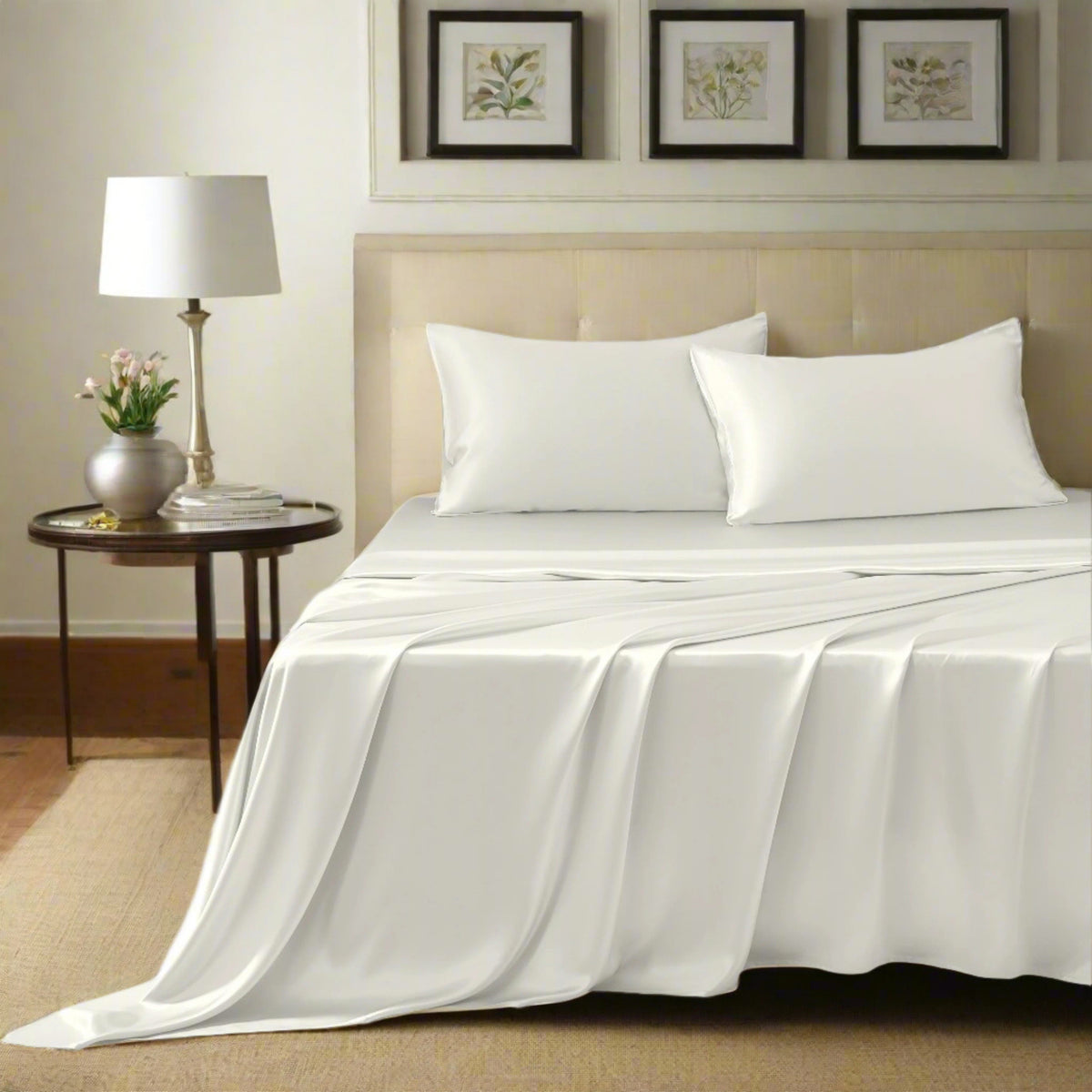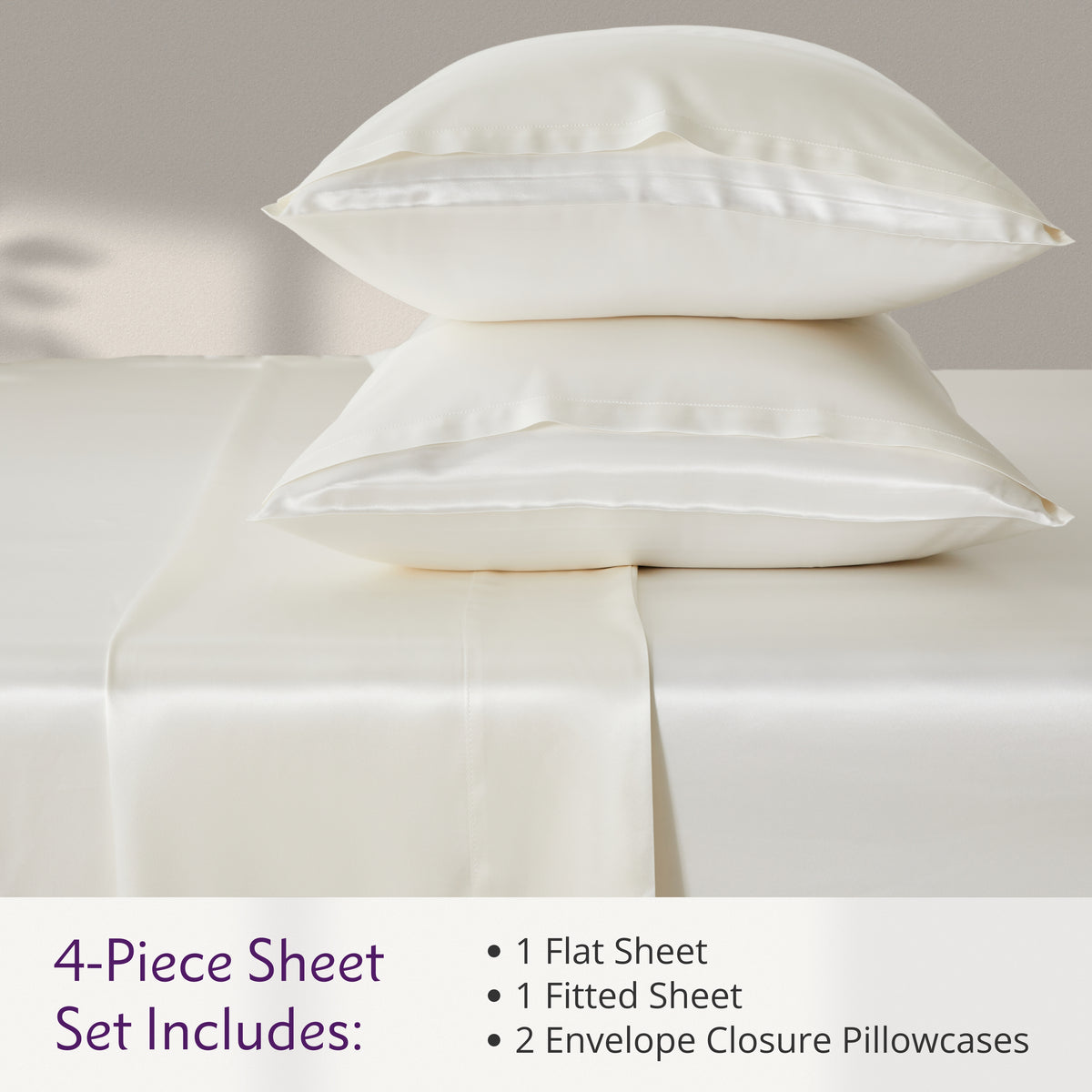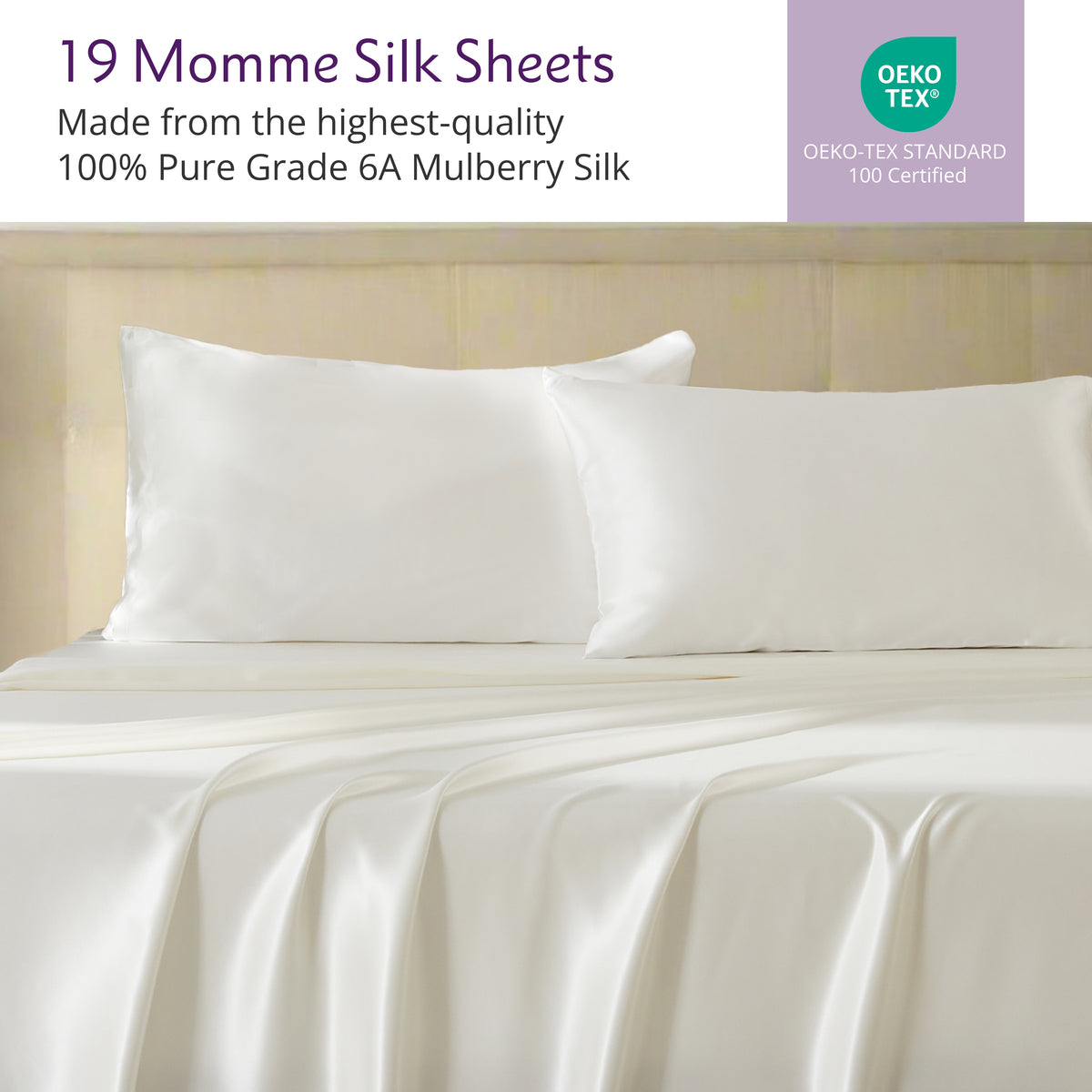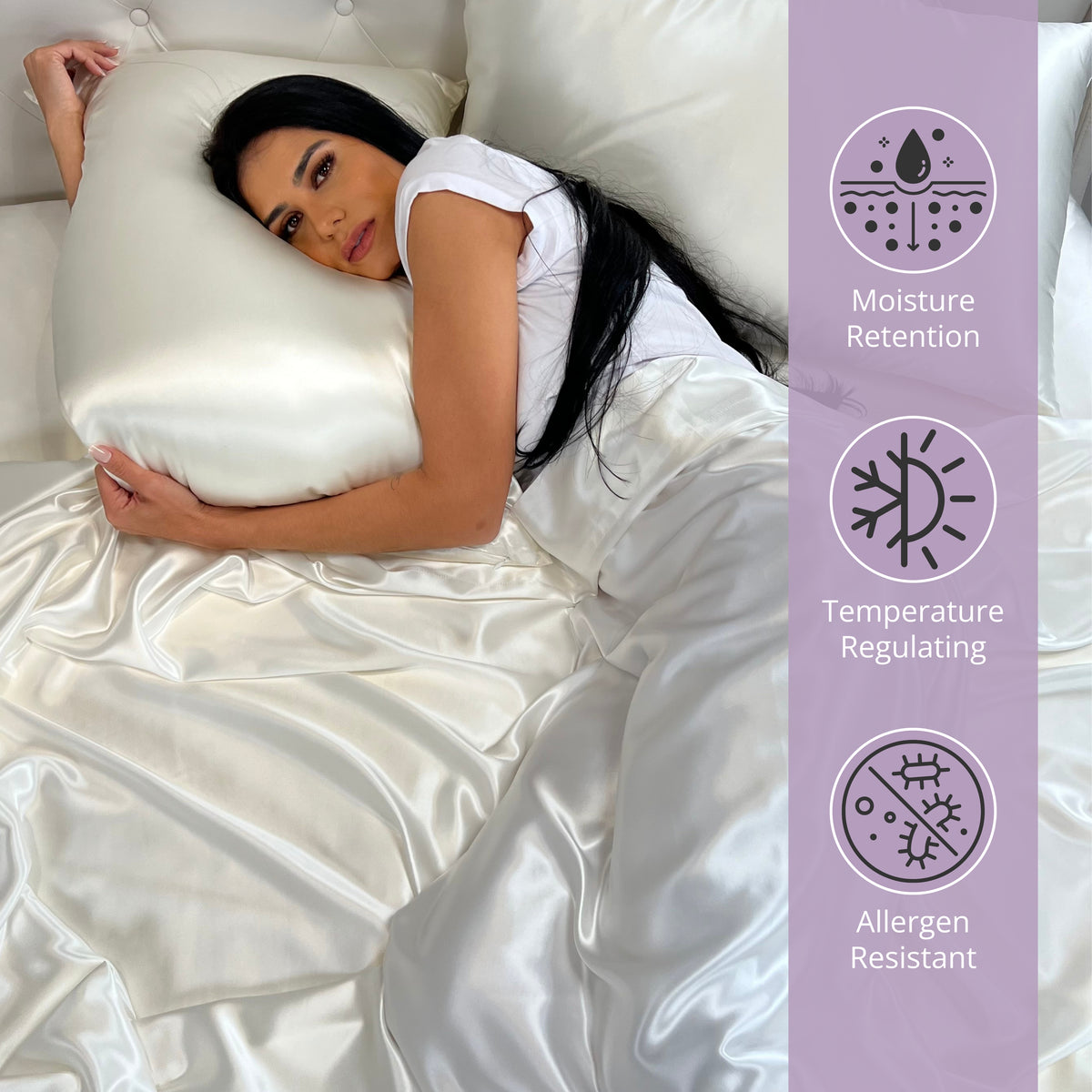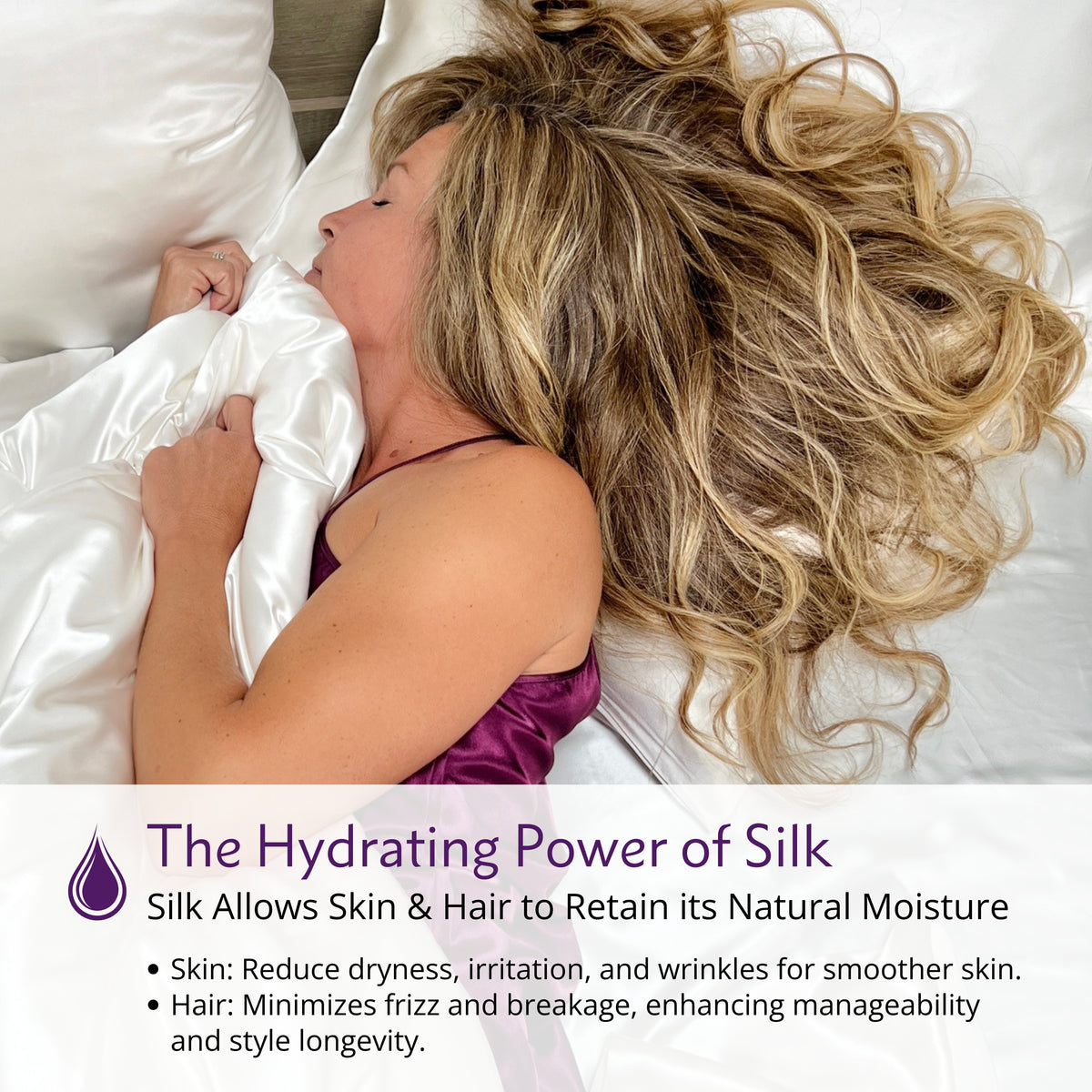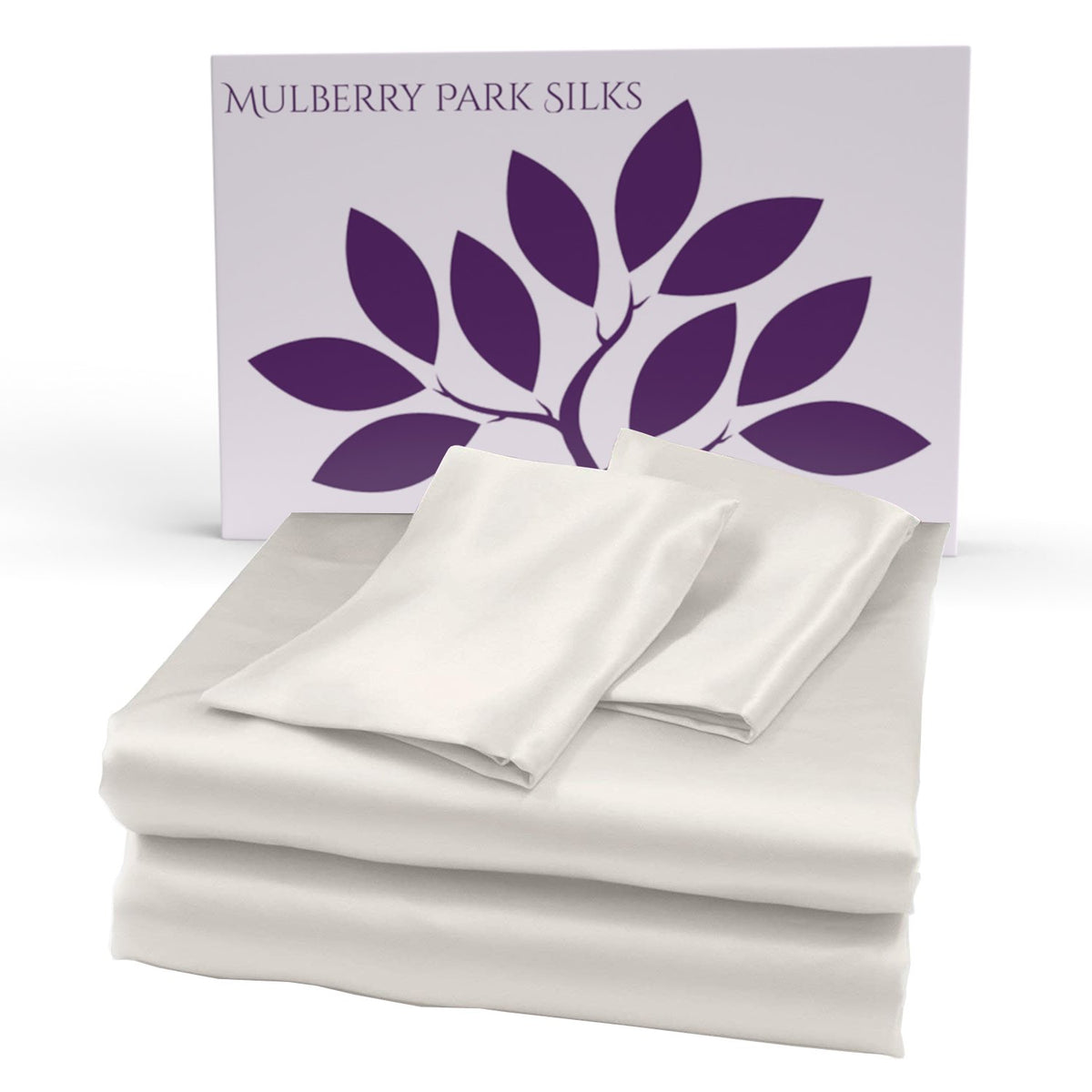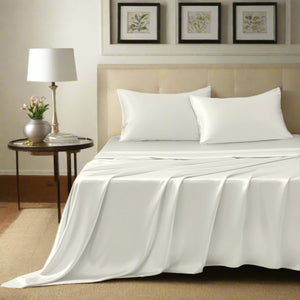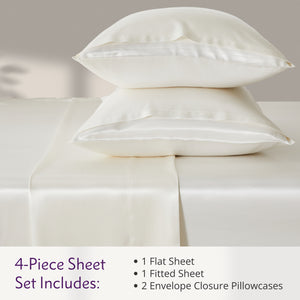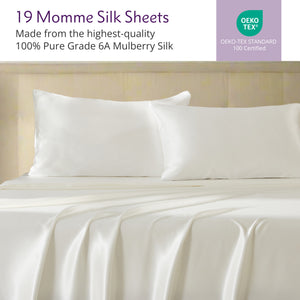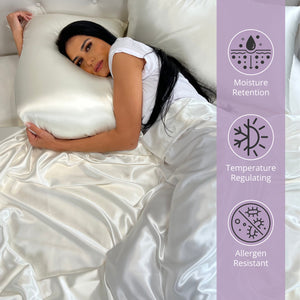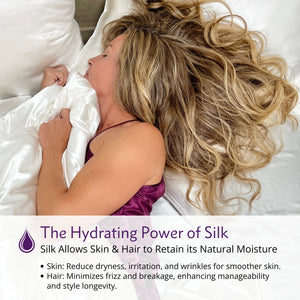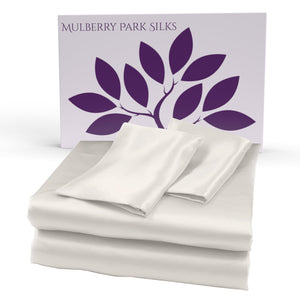With the growing popularity of silk pillowcases, sheets, and bedding, imitation silk is everywhere! This article helps consumers learn how to tell whether a fabric is genuine silk or a fake imposter fabric.
Inside this Article:
- Easy Ways to Spot Fake Silk and Identify Real Silk
- Eight Tips for Identifying Pure Silk
- Read The Product Description Carefully
- Silk Fabric Looks Different From Satin
- Silk Feels Different Than Satin
- Read the Label Carefully
- Buy Only from an Established, Trustworthy Company
- Look for OEKO-TEX or Other Independent Product Safety Certification
- Pay Attention to Silk Price Points
- The Silk Burn Test
- About the “Silk Ring Test”
- Never Settle for Anything Other Than Genuine 100% Pure Silk
- Real Silk vs. Synthetic Silk Comparison
- Genuine Silk Bedding is Easy to Care For
Easy Ways to Spot Fake Silk and Identify Real Silk
At Mulberry Park Silks, we sell the finest quality silk on Earth at fair and affordable prices. And we work hard to teach our clients about the benefits of sleeping on pure silk as well as how to get the best value when buying silk bedding and accessories. But unfortunately, the popularity of silk has attracted far too many unscrupulous merchants to the marketplace. The average consumer likely doesn’t know how to tell if silk bedding or accessories are real; these bad-faith companies exploit that fact by passing off fake or low-quality silk as the real thing.
You deserve better.
That’s why Mulberry Park Silks team has put together this essential guide to identifying authentic silk. We’ll show you how to tell if fabric is silk, including how to tell silk from polyester or other satin material by look, feel, labels, and price point. We’ll even discuss the legendary “silk burn test” and debunk the myth of the “silk ring test.” Read on to learn more about how to tell if silk is real and make sure you’re getting only pure, genuine silk sheets, bedding, and accessories!

Eight Tips for Identifying Pure Silk
1. Read The Product Description Carefully
This is your very first step to make sure you purchase real silk, particularly if you are shopping online. Read the product description to make sure you are considering only items made from 100 percent pure mulberry silk. You may see terms like “silky” or “silky feel” to describe pillowcases made from other materials like rayon, polyester, or cotton. If you are searching on Amazon, check the “Silk” box under the bedding material drop down menu to filter out all items that are not pure silk. You should also look for details in the description such as grade of silk and weight (known as “momme.”)
Pro Tip: if you DO NOT see the word momme in the product description, the fabric is definitely not silk and you should not buy it.
Start by reading the product description and eliminate all items that are not 100% genuine mulberry silk. Mulberry Park Silks provides detailed product descriptions for every item we sell.
2. Silk Fabric Looks Different From Satin

What does silk look like and how is it different from satin? Silk is defined by its luster, which softly catches and reflects light. Synthetic fabric cannot replicate that look. Indeed, synthetic silk tends to look shiny, as opposed to lustrous.
Genuine silk is always lustrous, never shiny. Fake silk is shiny.
3. Silk Feels Different Than Satin
What does silk feel like? Although both silk and satin are smooth on the front, satin tends to be more slippery in comparison to silk. The back side of polyester satin fabric will feel “harder” and similar to plastic, whereas the reverse of silk charmeuse is still soft, although with a duller finish.
All Mulberry Park Silks products are made with a charmeuse weave, smooth and lustrous on the front and dull on the reverse. Fake silk feels slippery on front and like plastic on the reverse.
4. Read the Label Carefully
Genuine, natural silk will always be labeled. Look for terms such as “100% pure mulberry silk.” The label may even mention the specific grade of silk and its momme weight, which is similar to thread count (higher momme weight means the fabric is more densely woven and the silk thread is thicker and stronger, indicating better quality silk).
All Mulberry Park Silks products are made from 100% mulberry silk in the highest grade (6A). We produce silk bedding and accessories in 19, 22, and 30 momme weights. Artificial silk may be labeled with terms such as "silky," "silk satin," "satin weave" or "silk weave." Of course, if you see the terms "synthetic," "polyester," or "artificial," you can be sure the fabric is NOT silk.

5. Buy Only from an Established, Trustworthy Company
As we mentioned earlier, there are many unscrupulous companies that attempt to pass off synthetic fabric like polyester as genuine silk. You can avoid these “silk oil salesmen” and their artificial silk by purchasing your silk pillowcase, bedding, and accessories from a reputable company. Begin by looking at the company’s website. Where are they located? Is there a customer service phone number? Do they disclose in full the quality details about their silk on the website? Do they have a well-curated inventory of silk items that shows they are experts in the silk business? How are their customer reviews? Don’t hesitate to pick up the phone and ask questions!
Many disreputable “silk” companies are located offshore and have no US address or viable customer service number. They have no established history; keep limited inventory; and provide few if any details about their products. Mulberry Park Silks is a U.S.-based company headquartered in Branford, CT, that is dedicated to selling silk pillowcases, bedding, and accessories. Our showroom is open to the public to see and touch all our silk products. Our charmeuse silk product line includes items such as a silk sleep mask and silk comforter cover . We are proud of everything we sell and stand behind our products in terms of quality and value. We would be happy to answer any and all questions about our silk, and welcome you to chat, email or call us at 800-860-1924.
6. Look for OEKO-TEX or Other Independent Product Safety Certification
Pure mulberry silk is naturally hypoallergenic and won’t irritate even the most sensitive skin. But you should also look to see if the silk you are purchasing is certified by an independent testing and accreditation program such as OEKO-TEX for safety and purity. While synthetic fiber and fabrics can be certified by OEKO-TEX, it is a costly and involved process. You will not find it on a synthetic fabric that is being falsely represented as silk. OEKO-TEX® certified fabrics will either be labeled or you will see the certification on the company website.
All Mulberry Park Silks products have been OEKO-TEX® Standard 100 certified for safety and purity through all phases of production. See the label here . You can learn more about our silk and OEKO-TEX here .
7. Pay Attention to Silk Price Points
How much does real silk cost? When it comes to silk, you get what you pay for but you should never overpay. Silk -- even genuine silk -- comes in a variety of prices. We recommend doing comparison shopping among reputable silk companies to educate yourself about price points. A general guideline is that if a silk pillowcase, for example, is priced under $20, it is probably fake silk material (polyester) or a cheap blend.
At Mulberry Park Silks, our products are well-priced and a wonderful value for their quality. We are very transparent about the factors that go into pricing our silk, including the weave, quality of silk, weight, and safety. You can read more about all these variables that factor into silk pricing or give us a call to discuss at any time.
8. The Silk Burn Test

We’ve saved the most exciting way of determining real silk vs. synthetic silk for last: the silk burn test. Does silk burn? Yes, and in a very specific way. Like hair, silk is a natural, protein-based fiber. When it burns, silk fiber burns slowly and in an irregular fashion, creates ashes, and smells like burnt hair. In contrast, fake silk material will essentially melt like plastic.
Don’t burn your good silk items! Really, just don’t do it. But if you want to perform the burn test for yourself, we’ll be happy to send you a small swatch sample . Make sure to perform the test only under fire safe conditions such as outside in a clean firepit and follow all safety guidelines.
So which is the best way to identify silk? The answer is all of the above. Using these suggestions alone or in combination will help you get a good understanding of what silk should look and feel like; how it should be labeled and priced; and who to buy from.
About the “Silk Ring Test”
We hope these suggestions help you learn how to identify silk. You definitely have some great strategies for how to tell if silk is real. We also need to debunk an old wives’ tale known as the "silk ring test." The idea behind the ring test was that you could tell if an item was pure silk if it could be compressed and slipped through a ring. While this “may” be effective for how to tell if a scarf is silk, it is NOT a good way to evaluate a larger item such as a silk pillowcase, sheet or a silk duvet cover. Moreover, even a real silk scarf may not fit through a small ring. When it comes to knowing how to test silk, we think the burn test is far more reliable (but again: ask for a swatch sample. Do NOT burn your genuine silk pillowcase or bedding!)
Never Settle for Anything Other Than Genuine 100% Pure Silk

When it comes to evaluating pure mulberry silk vs. satin, there really is no competition. Only silk provides the beauty, health, and overall wellness benefits you desire. Silk prevents bedhead, tangles and hair breakage; minimizes sleep wrinkles; keeps hair and skin moisturized; and naturally regulates body temperature for comfortable sleep. Silk is also naturally hypoallergenic, non-irritating, and resistant to dust mites and other allergens. It’s even wonderful for babies!
Which Silk Sheeting is Right for Me?
Which Silk Sheeting is Right for Me?
Real Silk vs. Synthetic Silk Comparison
|
|
Real Silk |
Synthetic Fabric Masquerading as Silk |
|
Product Description |
Will say genuine mulberry silk |
Will use misleading descriptions such as "silky" or "silk feel" |
|
Look |
Lustrous |
Shiny |
|
Feel |
Soft |
Slippery |
|
Label |
Will say "genuine mulberry silk" |
No label or false claims |
|
Safety |
Should have independent certification such as OEKO-TEX |
Will Not Have *synthetic fibers can be certified but they will be transparent about their content |
|
Price |
Not Cheap But Not Overpriced |
Too Good to be True Low Pricing |
|
Burn Test |
Natural fiber burns irregularly, makes ashes, smells like hair |
Melts |
Genuine Silk Bedding is Easy to Care For
Even better, most genuine silk -- like the silk pillowcases and bedding sold at Mulberry Park Silks -- can be easily washed by machine at home following these simple directions:
- Wash silk sheets separately in a 'silk-only' load
- Turn the silk pillowcases inside out
- Use mesh laundry bags when washing your silk bedding to prevent snags and tears inside the machine
- Wash on a gentle or "silk" cycle in cool water
- Never use fabric softener or bleach on genuine silk
- Don't put your silk sheets in the dryer. Hang your silk to dry indoors or out side away from direct sunlight (sun can cause silk to fade)
- Ironing silk is not necessary. If you choose to iron, follow these directions for ironing silk bedding without damaging it.
Also, we recommend using a detergent specifically made for washing silk, such as Heritage Park Silk and Wool Laundry Detergent. This pH-neutral formula is made to effectively clean protein-based fabrics without damaging fiber.

























